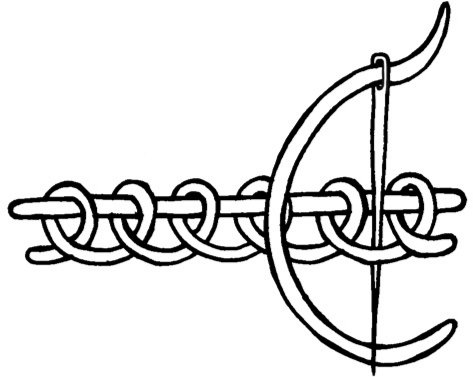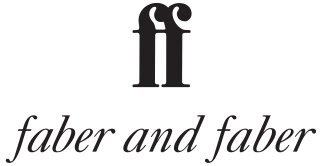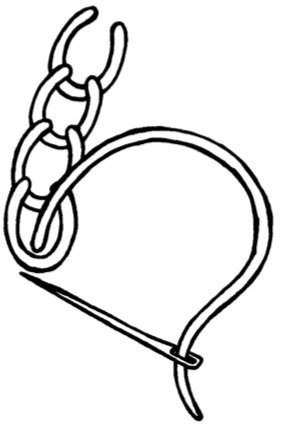Things to Make and Mend
Read Things to Make and Mend Online
Authors: Ruth Thomas

RUTH THOMAS


For my sister Ann
… and then, while she threaded her darning-needle with the right worsted,
she would fish about in her memory for a tale to fit the hole.
Eleanor Farjeon,
The Old Nurse’s Stocking Basket

Here are some of the things you might make:
Tray cloth
Handkerchief
Curtains for a puppet theatre
Belt
Hairband
It is best to use:
Firm material
Largish needles
Embroidery silk or cotton
The Brownie Guide Handbook,
1968
Sally Tuttle loves haberdashery departments.
Sometimes she will walk into one just to gaze at its beauty: at the ribbons and feathers, the broderie anglaise, the stacked
rainbows
of silk and cotton. It is like admiring a mountain or a still lake. Sally stands and regards the rows of threads, the baby wools, the beads, the sequins, the poppers, the cloth-covered buttons. She is soothed by the stiff, wicker dummies modelling their cardigans; the wide strips of satin, the magazines with their racy titles (
Creative Cloth! Stitching Today! Cross-Stitch!
). She even admires the word
Haberdashery,
printed on the swinging sign above her head.
Haberdashery,
with its hints of the Middle East and of the village hall.
There is also the fact that you hardly ever see a man in there. Haberdashery departments are havens; convents dedicated to the Patron Saint of Quiet Women. She walks into them to kneel at the altar of stranded cottons.
*
Most nights at the moment Sally has a curious dream about haberdashery. Her latest one involved a vicar sitting on a
three-legged
stool, eating peanut-butter sandwiches and stitching together a patchwork quilt. When Sally – her hovering
dream-self
– looked more closely at the pieces of cloth, she realised they were all her old school badges. The vicar had a huge pile of them beside his sandwiches: grey flannel badges bearing the picture of an owl and the motto
patione et consilis.
Patience and judgement.
What was that all about?
Sally wondered when she woke up.
She once went to see a counsellor who talked about the value of dream analysis.
‘Dreaming about water, for instance,’ said the counsellor, ‘can signify something to do with your relationship with your
children.’
‘Not something like dodgy plumbing?’ Sally asked. ‘Or a burst water main outside your house?’
(This had in fact been the case at the time – their street had been awash for two whole days, like a fast-flowing river. At night the rippling sound was calming, taking her mind off things.)
The counsellor looked at Sally. She had big, eye-magnifying glasses.
‘No,’ she said sternly. ‘It is often nothing to do with actual’ – she paused – ‘watery events. How are you getting on with your daughter?’
‘Fine.’
‘And your parents?’
‘Fine.’
‘How about, erm …’ She looked at her notes.
‘Yes, fine thanks,’ Sally said.
Dream analysis has always seemed a bit airy-fairy to Sally. As does counselling. She has no patience with it. She only saw the counsellor (a Mrs Bonniface) three times before saying, ‘I’m sorry, I just don’t think this is for me.’ Looking relieved, Mrs
Bonniface
said, ‘You have to be ready, Sally. You are obviously not ready.’
‘No,’ Sally replied, picking up her bag, the one with far too many straps and buckles, and heading for the liberating rectangle of the doorway. ‘But thank you very much,’ she said. She felt as if she had failed an exam.
She wishes she could be one of those people who embrace things. But even though she likes the floating styles and pensive music of the Seventies, even though she is, she hopes, a gentle
child of the Sixties, she is impatient with anything New-Agey, crystallish, alternative. It must be her upbringing – her practical, pragmatic parents with their routines and their slippers and their slices of sponge cake. She was picked up from that life, though, and dropped into another. That is the problem. It causes
confusion.
So she puts her trust in tangible things, material things, things that connect to other things. She likes her cat-shaped
keyring
fob, her lined curtains, her folksy wooden bookends, her crocheted, beaded doilies. They make her feel safe. In any case, her own vagueness, her ‘gossamer-light hold on reality’ (to which one of the men in her life once alluded) does not need further encouragement. Maybe that is why she became a needlewoman. There is nothing more tangible than threads sewn through cloth. She is happiest with something that is stitched down, not given the chance to slip or unravel or change.
*
The clothing-alterations shop where she works is called
In Stitches.
She has been there for eleven years. On difficult days it is a solace, requiring just enough concentration to take her mind off things, but leaving her daydreaming space. At other times it can be tedious, tedious, as she sits at her work-table surrounded by boxes of pins and name-tapes to sew into the collars of some unknown schoolchild.
Occasionally it is a source of amusement to others. (
‘In Stitches
as in
had me in stitches?’
asked Graham, a man Sally was seeing recently – an estate agent from Hither Green. ‘Can I have you in stitches?’ he had asked clumsily – they were sitting in a dark cinema at the time, on their second date. ‘No,’ Sally hissed back, failing to achieve an intended tone of high spirits, clenching her ticket in her right hand. Neither of them had been any good at innuendo.)
Most people would have left In Stitches straight away if, like Sally, they’d suddenly been awarded a large amount of money.
But Sally hasn’t. Sewing is a job she can do. It will still be there when she has spent the money. She is in fact a little scared of
leaving.
In Stitches is a comfort in her life, despite being a poky little shop located down a side street in East Grinstead, between a
car-display
showroom and a dog-grooming parlour. (‘A thorn between roses,’ Sally’s mother calls it.) It is owned by a man called Clive Brayne, who is hardly ever there, and is worked in by three women, Sue, Linda and Sally, who seem to be there all the time. Over the years they have developed their own
specialities:
Sue works on trouser legs, Linda takes in side seams and Sally
restitches
broken hemlines. The shop is busiest at lunchtimes, just when they are tiring and need a break themselves. The
over-locker
invariably locks. It is always too hot, ‘Evil Edna’ the steam-iron creating a kind of jungly atmosphere which they try to counter by wedging the front door open with a needle case, allowing the cold winds of East Grinstead to blow in. By
one-thirty
they find themselves confronting a pile of broken-down clothes, their stitches burst and buttons lost. And Sue, Linda and Sally have to mend them within an hour. The shop has
established
itself upon its one-hour alterations service. They stitch against the clock, the silence broken every so often by the
swearing
that accompanies a stabbed finger. Sue and Linda and Sally. They have become friends in the detached but intense way of put-upon work colleagues. They love each other in a sense, and also know that any day one of them could leave and never return.
I’m out of here, girls,
and away one of them will go, into her future. But who is it to be? Meanwhile, they share each other’s submarine rolls and talk about their husbands, exes, children, parents. They would never dream of inviting each other home. They went carol-singing together once, for charity: they called themselves The Needlepoint Sisters and traipsed around in the snow outside other people’s homes. They had all had a hard autumn and early winter, culminating in this: three grown
women shuffling around in the cold, ringing doorbells, singing ‘We Three Kings’, ‘Good King Wenceslas’ and ‘Ding Dong
Merrily
on High’. Sally shook the collection box, Linda held the torch, Sue started off the singing. They harangued the suburbs. Sometimes, people’s living-room lights would be on but no one would come to the door.
*
‘Isn’t it funny,’ Sally said to Sue the other day, ‘the way you
suddenly
realise you’re not twenty-eight any more?’
Sue looked at her. ‘I realised I wasn’t twenty-eight a long time ago.’
‘Yes,’ Sally said, ‘but you don’t notice it catching up on you, do you? Age. You just think you’re in your late twenties for years, and then suddenly you’re not. You’re in your forties. And the father of your child’s nearly fifty! And people start calling you madam. And you never get whistled at by builders any more …’
Sue stilled her work – a floral skirt – in her lap.
‘… and you think,’ Sally continued, ‘why have I got these lines on my forehead? And where have all these white hairs come from? I didn’t know I had all these white hairs.’
‘Sally’s having a midlife crisis,’ Sue yelled to Linda, who was taking in an enormous pair of trousers at the back of the shop.
‘Been there, done that, got the postcard,’ Linda shouted back, pins in her mouth. ‘Except people never call me madam.’
‘And you’re halfway down the ages in those tick-the-box
questionnaires,’
Sally said. But now she was thinking,
Stop it, stop it, stop talking.
She really had been worried, lately, about her life. She laughed, rearranging her position on her locked swivel chair. ‘It’s just funny,’ she said.
And she shut up.
Sue hung on to her hemming. Then she leaned forward to pat Sally on the knee. She smiled, her lips warm and lipsticked. She said ‘You’ve still got to get on with it though, haven’t you?’
She is a sensible woman, Sue. Sage, owlish. She is heavily built and wears a lot of floating chiffon to counter-balance her girth. Despite this concession to impracticality she always washes up everyone’s mugs at the end of the day.
‘Why can’t I be as wise as you?’ Sally asked her.